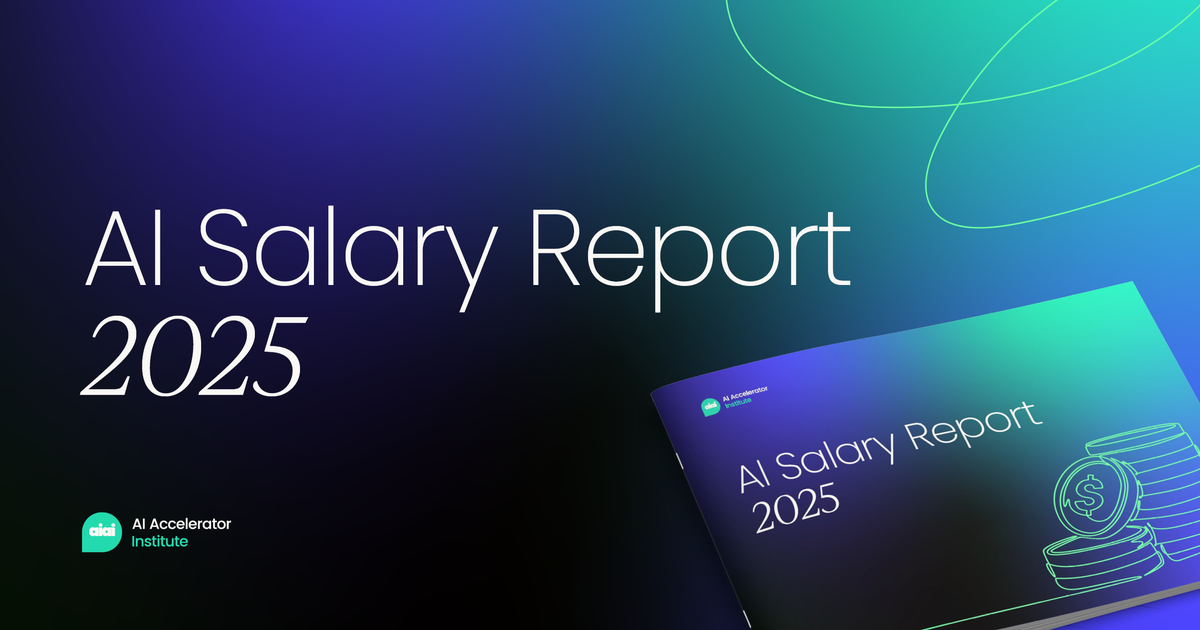The convergence of AI and AR/VR is changing the way we engage with, explore, and even create content for virtual worlds. This convergence is adding intelligence, realism, and adaptability to immersive experiences like never before, enhancing the potential of AR/VR significantly.
AI adds intelligence, personalisation, and adaptability to AR and VR interactions, thereby enhancing the degree of responsiveness and smoothness of the system for user needs.
This convergence of technology is more than just an innovation, it represents a significantly growing industry; According to a study of Verified Market Research, the AR and VR market surges to USD 214.82 billion by 2031, propelled by 31.70% CAGR.
At the same time, PwC predicts that AI advancements in business functions like training simulations, remote work, and cross-location teamwork will greatly enhance VR and AR applications, contributing $1.5 trillion to the economy by 2030.
Additionally, the AR and VR consumer segment is set to soar as well. IDC estimates that global expenditure on AR/VR will exceed $50 billion annually by 2026, with AI personalisation driving demand.
In addition, the AI-in-AR/VR sector is projected to experience a growth rate of more than 35% CAGR in the next few years, highlighting the transformative influence of intelligent algorithms on immersive technologies.
This rapid expansion illustrates the need for advanced virtual experiences powered by AI in almost every sector. It is predicted that by 2029, the number of users in the AR & VR market worldwide is expected to reach 3.7 billion.
As AI improves the functionality of AR/VR applications, it will change how we interact with the digital world and the real world, merging virtual and real experiences in ways we have just begun to scratch the surface of.
The integration of AI with AR/VR technologies
The growth of AR technology is quite evident with the success of Vuzix Blade and Epson Moverio’s step into the enterprise world. Imagine a scenario in which AI interacts with you on a personal level and caters to your every need while guiding you through a new virtual world that seems similar to our physical world.
Undoubtedly, from enterprises to personal users, the use cases are limitless. Remote workers, for example, can use AR glasses to get real-time guidance from AI virtual assistants that enable them to work more productively. Users can expect advanced navigation, e.g., guided navigation, virtual try-ons, and much more. Some remote workers could receive real-time assistance through virtual AI helpers.
On one hand, with the lines blurring between the physical and virtual worlds, the integration of AI with AR and VR will cross new boundaries and significantly enhance user experience.
On the other hand, AI is changing the game for creators of AR and VR technologies by completing repetitive tasks like 3D modeling and creating textures, allowing creators to make important, high-level decisions. Immersive experiences have also become easier to create due to AI tools, which allow unrestricted real-time rendering, physics simulation, and dynamic lighting.

Enhancing AR/VR experience through AI
1. AI-powered personalized experience
AI systems assess usage patterns and modify content depending on prior encounters, preferences, and even emotions. A recent survey by PwC found that 55% of individuals are prone to patronising companies that offer personalised services, further demonstrating the strength of personalization.
In AR/VR, this transition leads to the creation of animated virtual universes that adapt to the user’s inputs and wishes, resulting in spaces that are highly personalised and pleasing to satisfy the users’ needs.
2. AI-powered optimisations
The impact of AI on XR systems is evident as its applications boost motion anticipation, compression, and rendering to achieve seamless and consistent visuals.
NVIDIA CloudXR employs AI-driven pose prediction for user movement tracking, which enhances motion responsiveness and stream relays in cloud-streamed XR applications. Furthermore, real-time frame scaling of lower resolutions through DLSS enhances visual sharpness without increasing GPU demand.
The ability to cut bandwidth consumption dramatically through AI-powered video compression enhances the fluidity of AR/VR streaming over conventional networks. Dynamic foveated rendering from Meta’s XR ecosystem advancements and Qualcomm’s Snapdragon Spaces utilizes AI to optimize detail-rich areas for user gaze focus while expecting lesser detail in peripheral views. Such improvements significantly improve immersion capabilities for users.
3. Enhancing emotional intelligence for AR/VR applications through AI
The realm of AR and VR is being transformed by AI, especially in the areas of emotion recognition. Utilizing machine learning techniques, AI systems are capable of discerning emotions through voice, posture, and even subtle facial expressions.
Such capabilities can dynamically tune AR/VR experiences. For instance, an emotionally intelligent AI VR game could tailor its story or modify the game’s level of difficulty based on the emotional feedback received from the player. Similarly, emotion-sensitive AI could improve responsiveness in strategy educational games by changing content to meet a student’s emotional needs.
Researchers also suggest that AI designed to recognize emotions can enhance emotional engagement, or more basic cues could be used to guide remotely controlled environments. context of gaming
4. AI for natural language & gesture control in AR/VR
AI is transforming the manner in which people engage with AR and VR technology through natural language processing and gesture control. Hands-free operation is made possible through voice recognition powered by AI, such as Google’s Dialog Flow.
On the gesture recognition front, AI-powered hand tracking is transforming how users interact in VR. Leap Motion’s AI sensors allow for precise hand movements and gesture recognition in VR applications, making them as responsive as real-world interactions.
Gesture tracking also allows for interaction with the Microsoft HoloLens AR smart glasses, integrating touch-free commands in the medical, industrial, or enterprise applications. Bringing digital experiences closer to the real world, these features deepen the immersion and usability of AR/VR systems.
5. AI augmentation of virtual beings (NPCs) in AR/VR
AI modifies virtual humans and NPCs in AR/VR systems by automating their responsiveness and emotional sensitivity.
Avatars and NPCs (non-player characters) powered with AI technology facilitate immersion through real-time context-responsive dialogues powered by Natural Language Processing (NLP), computer vision, and deep learning. In gaming and social VR, AI-powered NPCs are interacting with users on a more sophisticated level.
NPCs with personalities, memory, and emotional intelligence can now be created, enhancing the engagement level in VR storytelling and multiplayer gaming. These advancements in AI-engagement are redesigning user immersion in AR/VR systems as interactions become less mechanical and more lifelike with sociability and emotions.
6. AI-powered virtual worlds: Bridging the gap between digital and reality
NVIDIA’s Omniverse employs AI photorealistic modeling and physics simulation to enable seamless collaboration in virtual spaces. Photorealistic environments are explorable in real-time.
Epic Games' Unreal Engine 5 uses AI-based procedural techniques for the creation of untamed and lifelike explorable terrains. In social VR, Inworld AI and Charisma.AI animate NPCs with self-adaptive dialogue systems and emotional intelligence, transforming avatars into engaging personas.
Advances in AI illumination techniques, AI-powered physics, and object recognition open new frontiers where realism transforms immersion, making the world more wondrous.

Enhancing creators’ potential with the help of AI
While enhancing the end user experience, AI is also enhancing AR/VR creators’ capabilities in several ways.
AI-assisted 3D content creation and world building
One of the most challenging tasks for AR/VR developers is creating high-quality 3D assets and environments.
World generation and asset creation are now automated with AI. NVIDIA’s Omniverse and Epic Games’ Unreal Engine 5 employ AI-powered procedural generation to construct incredibly detailed, photorealistic landscapes with little human intervention. Additionally, AI tools like Promethean AI, which help artists by automatically generating 3D assets, are becoming more common.
Data-driven decision-making for AR and VR creators using AI technologies
AI assists AR and VR creators with making data-driven decisions on user behavior, level of engagement, and overall experience using performance metrics.
User interaction with virtual environments is monitored through advanced analytics systems like Niantic’s Lightship VPS, Unity Analytics, and others, enabling developers to improve game design, mechanics, user interfaces, and overall user engagement.
AI sentiment analysis and interaction heatmaps are utilized by Meta’s Horizon Worlds to monitor player interaction, enabling improvements in social VR space features and functionalities.
Additionally, the spatial understanding of how users interact with AR technologies is facilitated through AI-powered technology in Google’s ARCore, enabling brands to construct unique, immersive advertisements.
AI approaches to A/B testing, forecasting, and user experience customization enable AR and VR creators to define parameters on monetization, engagement, immersion, and interaction without being decisive.
A time of unified, intelligent engagements
The advent of AR/VR alongside AI is revolutionizing the way digital content is created and consumed. The report from Gartner does suggest that 40% of AR/VR applications from the consumers’ perspective in 2026 will be integrated with AI; a clear testament to the potential that such intelligent immersive applications possess.
Whether it's gaming, virtual meeting spaces, or working on creative ideation, the core merger of AI and AR/VR is rendering boundaries obsolete.
In the words of Nvidia’s CEO, Jensen Huang, integration of AI within immersive tech is not resizing or enhancing the relevance of the technology but rather altering the paradigm of interacting with the computer. For creators, it’s a great time to explore various tools and devices, while for consumers, it is the beginning of adaptive and tailored interactions.
With every innovation, it seems like the world where the digital space doesn’t stand out from our reality, it simply merges, is not so far. In fact, it seems like it has the potential to rework the definition of work interactions and creativity.



 Follow us on LinkedIn
Follow us on LinkedIn




